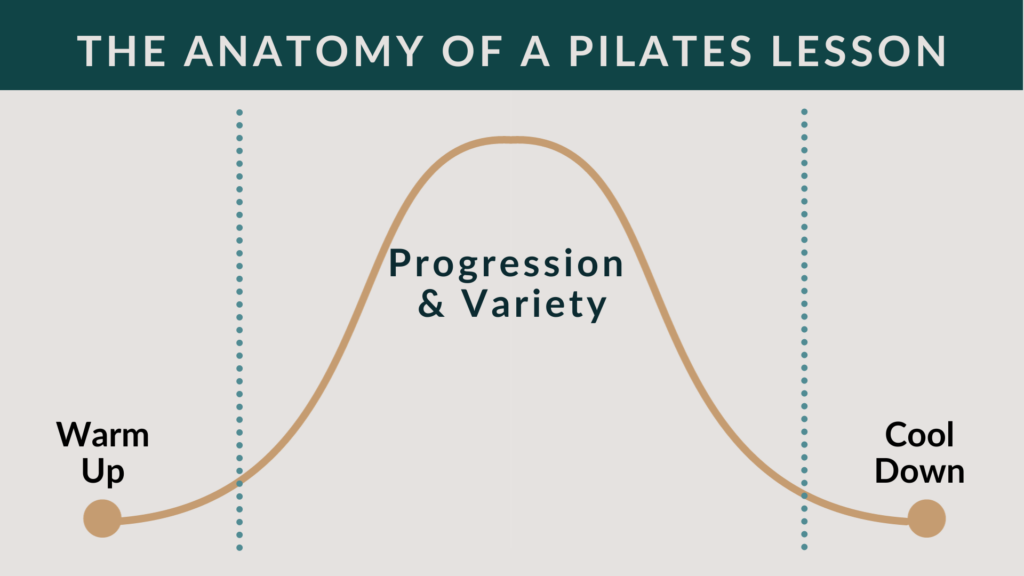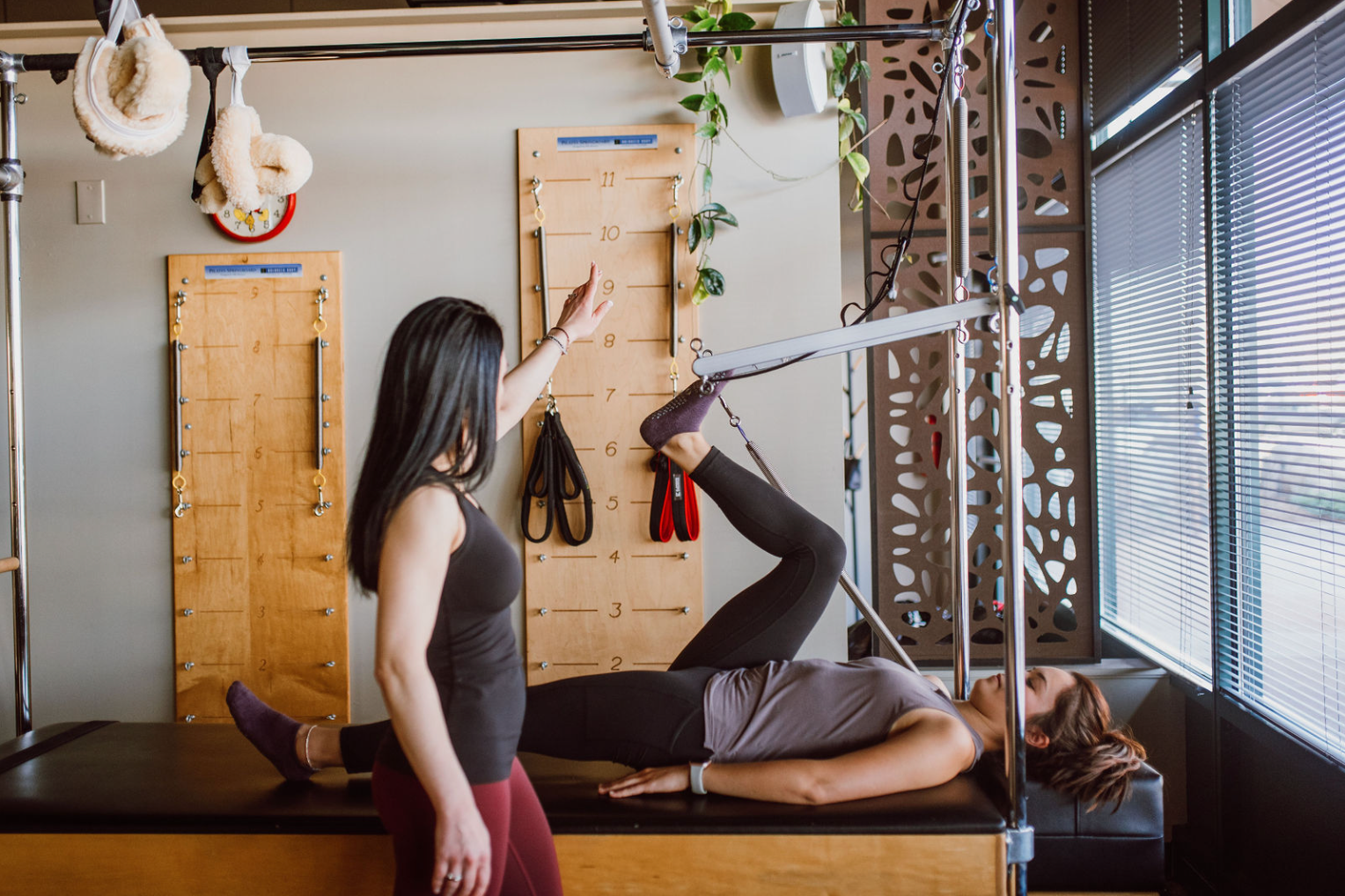Mastering the art of a great Pilates lesson is the goal of every instructor. (I chose the word ‘art’ here because it’s not as simple as a technically precise class—though we should all aspire to precision). A great Pilates lesson immerses the client in the movement, meets their short term desires while addressing long term goals, and makes the hour disappear without a glance at the clock.

While there is no single way to craft the perfect lesson, through decades of instruction I’ve developed strategies and a loose formula that can move you closer and closer to achieving the kind of lesson that keeps your clients coming back day after day, year after year.
Steps to Establishing a Quality Pilates Lesson Plan
Establish confidence with your class. Establishing confidence as a Pilates instructor is essential for creating an effective learning environment for your clients and earning their trust. Confidence not only makes you more credible but also helps your clients feel more comfortable and motivated. This is easier said than done, but there are some simple steps to make sure you’re starting your Pilates class as confidently as possible:
-
- Maintain your own personal Pilates practice. This not only keeps you physically fit but also helps you understand the challenges and benefits your clients experience. Your personal practice can be a source of confidence and inspiration.
- Welcome the class and introduce yourself. Let the class know who you are and why you’re there. Your non-verbal cues, such as maintaining eye contact and having an open and welcoming demeanor, can help clients feel at ease.
- Set class expectations with clear communication. When you speak with authority and let the class know what to expect, they will trust you as their guide and allow themselves to follow you through the class, wherever you choose to take them.
An intentional warm up. Warming up before a Pilates session is crucial for preparing the body and reducing the risk of injury. A proper warm-up increases blood flow to your muscles, raises your body temperature, and helps you mentally focus on the upcoming workout. My favorite warm up exercises include:
-
- Deep breathing. Lead the client through slow, measured breaths, in through the nose and out through the mouth, to release tension and relax into the lesson.
- Spinal activation. Begin with gentle spinal movements to mobilize the spine and prepare it for the more effortful movement to come.
- Hip, arm and ankle circles. These small movements warm up the body and increase circulation.
- Leg swings and toe taps. Activate the lower body and gently prepare the client for more rigorous activity.
Progression. Think about progress in two ways: each class should progress from foundational to more challenging movements, and over time, programs should be adapted for each client to ensure that they are progressing from class to class. Neither the instructor nor the client should ever be bored in a Pilates class. There are always ways to continually challenge strength, flexibility and stability, and these challenges keep clients coming back for more.
Variety. Incorporate a variety of Pilates exercises to target different muscle groups and keep the sessions engaging. A well-rounded program should include exercises on both the mat and various equipment when available such as the Reformer, Cadillac, and Chair. Personally, I also like to use a posture stick to correct alignment.
Cool down. A good Pilates cool down is essential to help your client’s transition from a workout state to a more relaxed state, prevent muscle soreness, and promote flexibility and mobility. The routine should take about 5-10 minutes and can be adjusted to meet the specific needs of the class. My favorites include:
-
- More deep breathing. Guide the class through another breathing exercise to slow their heart rate and transition from work back to rest.
- Child’s pose or another restful position. Let the class take their time and allow their body to fully relax and recover from the session.
You might incorporate a relaxing exercise like this neck stretch from pilatesbylaar:
View this post on Instagram
Post lesson closure. Take a few minutes at the end of each class to allow space for questions, offer feedback or optional exercises to continue at home, and most importantly, honor your clients by thanking them for joining you. Remind them that each time they come to class, they are showing up for themselves and prioritizing their health and well being.
As you can see, within the general framework of the class there is a lot of room for creativity, adaptability and even on occasion, improvisation, if that is what the situation calls for. Here is how one person does it:
When you develop a clear plan that also allows space for your unique personality to shine through, you’ll establish the trust required to help your clients progress and thrive in their own practice.
Sign Up for Our Newsletter
Sign up for our bimonthly newsletter for tips and tricks about running your Pilates business. Plus, you’ll be the first to know when we publish in-depth content like this article, and you’ll have access to exclusive resources and downloads.





